There’s a special kind of magic in creating a complete, thriving underwater world that can fit on your desk or a bookshelf.
A miniature aquarium is a captivating challenge, a living piece of art that brings a sense of calm and wonder to any space.
While their small size requires a unique approach, success is incredibly rewarding and easier than you think with the right foundation. This guide is that foundation.
We’ll demystify the process and walk you through everything you need to know, from the essential equipment and the golden rules of water chemistry to setting up your first scape and choosing the perfect inhabitants.
Table Of Contents:
ToggleWhat is a Miniature Aquarium?
A “miniature aquarium” is a broad term for any small-scale aquatic habitat, often called a “mini tank.” These are complete, self-contained underwater worlds with a much smaller footprint than a traditional aquarium.
Our mini tanks, like the versatile Bantamarium V2 AQUA | MINI (0.41 gallons / 52.9 oz) and the more spacious Bantamarium V2 AQUA |NANO (1.33 gallons / 170 oz), are perfect examples of this popular and growing category.
The Unique Appeal
The allure of a miniature aquarium is undeniable.
It allows you to create a stunning, intricate underwater landscape that can fit in small spaces where a traditional tank never could… a desktop, a kitchen counter, or a bookshelf.
They are a more affordable entry point into the hobby and a fantastic creative challenge for aquascapers who love to work with fine details.
The Primary Challenge: Stability
The golden rule of miniature aquariums is simple: the smaller the volume of water, the faster things can go wrong.
In a large tank, a small mistake (like overfeeding) is diluted by the sheer amount of water. In a mini tank, that same mistake can drastically change the water chemistry in a matter of hours.
This is why a disciplined approach to maintenance and a deep understanding of the fundamentals, especially the Nitrogen Cycle, is the true key to success.
Essential Equipment for Your Miniature Aquarium
Setting up a successful miniature aquarium is all about creating a stable, healthy environment, and that starts with having the right gear.
Our Bantamarium fish tank kits are designed to provide the core system you need to build a thriving underwater world.
The Tank: A Watertight Foundation
The most important piece of equipment is the tank itself. The Bantamarium V2 AQUA Fish Tank is built using our VAPO Core Glassware.
This is crucial because its base is seamlessly and permanently sealed, making it 100% watertight right out of the box.
This removes all guesswork and provides a safe, reliable foundation for your aquatic build, ensuring you never have to worry about leaks.
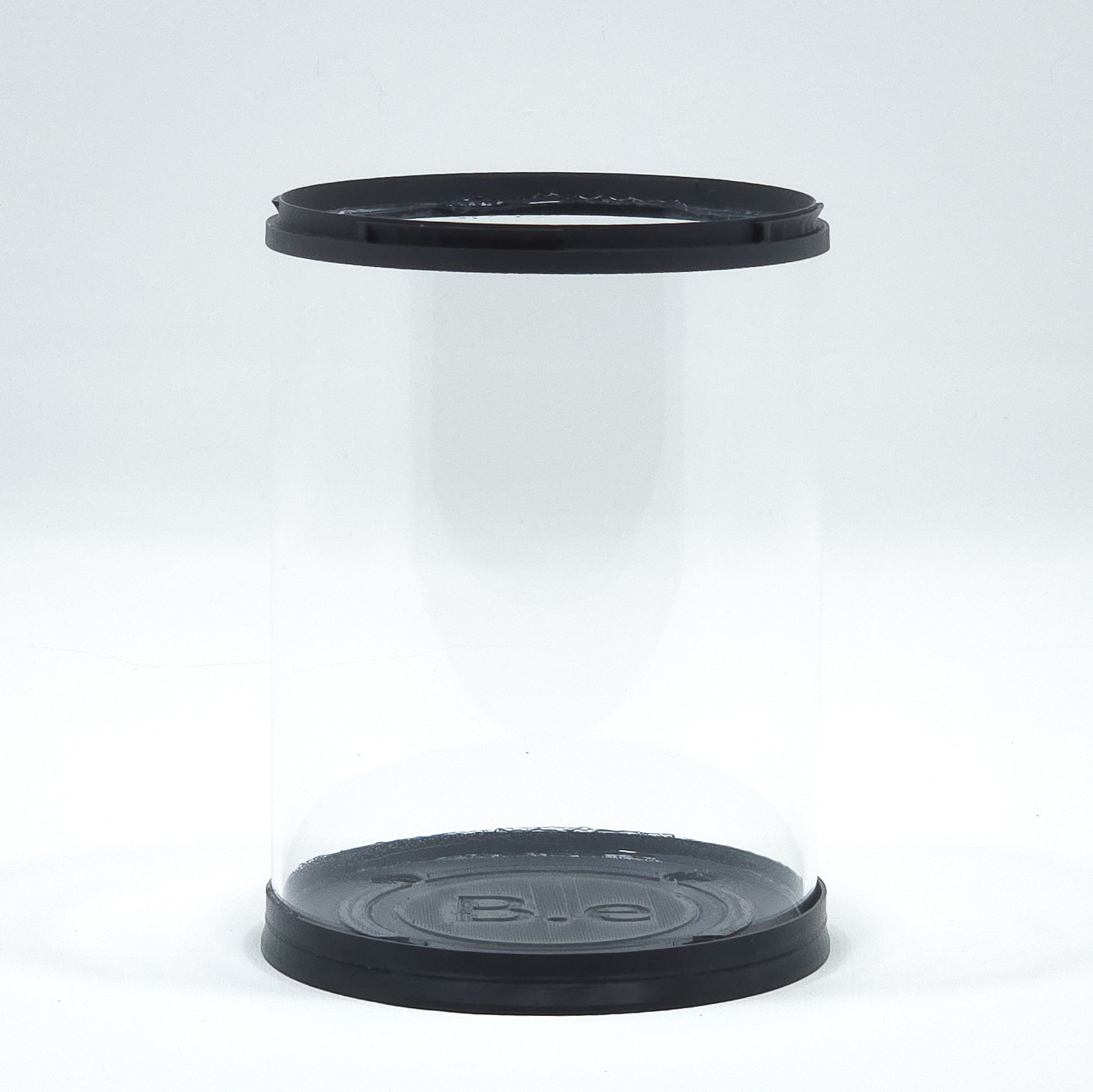

The Filtration System
In the small volume of a miniature aquarium, water circulation and filtration are non-negotiable for keeping your inhabitants healthy.
Your kit includes a 50 GPH, 3W, Mini Water Pump. This silent, powerful little engine is the heart of your aquarium.
It continuously circulates the water, preventing stagnant spots and providing a home for the beneficial bacteria that act as your primary biological filter, breaking down waste and keeping the water clean and clear.
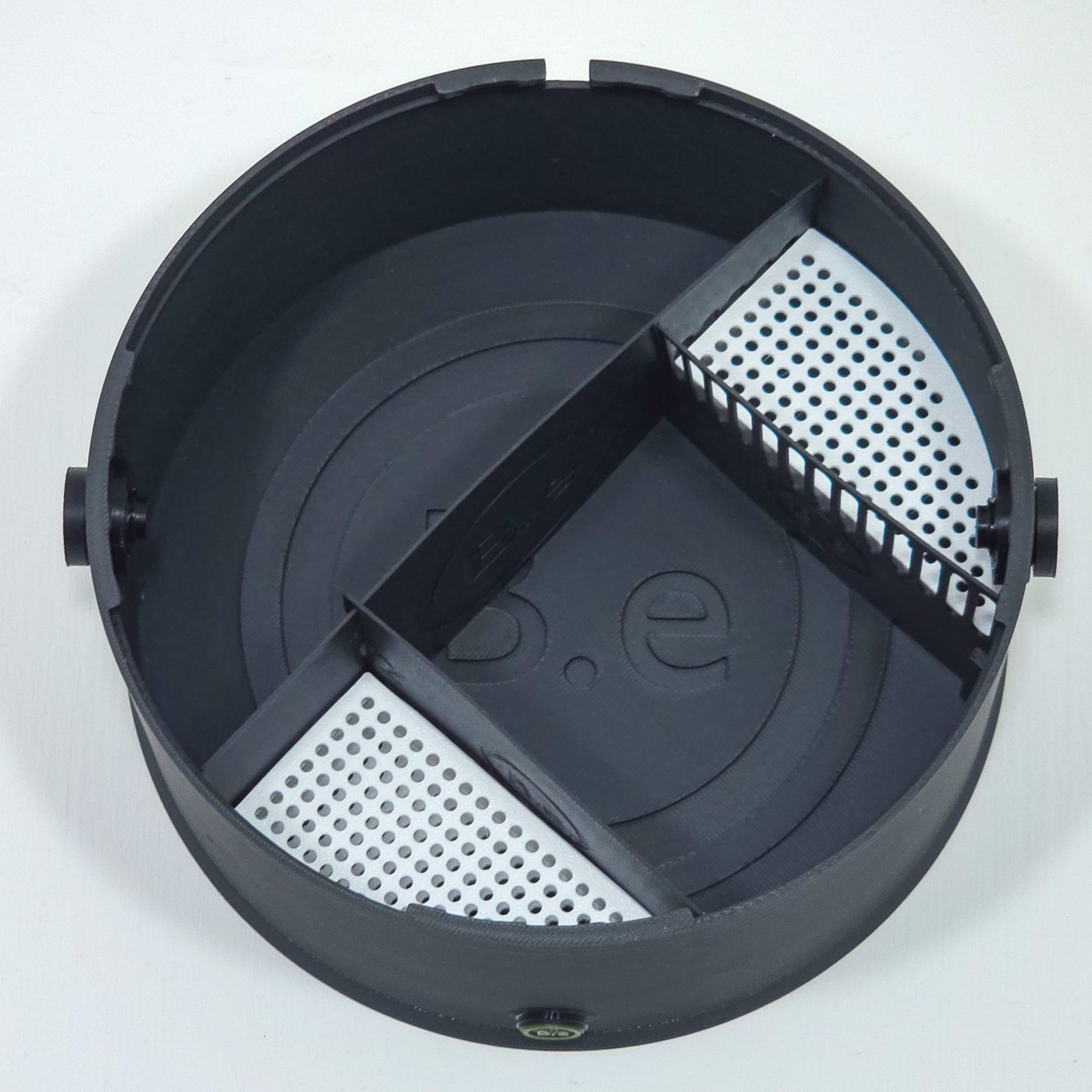

Lighting
Proper lighting is essential for growing aquatic plants and making the colors of your inhabitants pop.
Your Bantamarium aquarium kit comes standard with the Bantamarium Light Top, a powerful, USB-powered LED that twist-locks securely into the lid.
It provides the ideal light spectrum for a vibrant, healthy planted tank and gives you the best possible view of your miniature world.
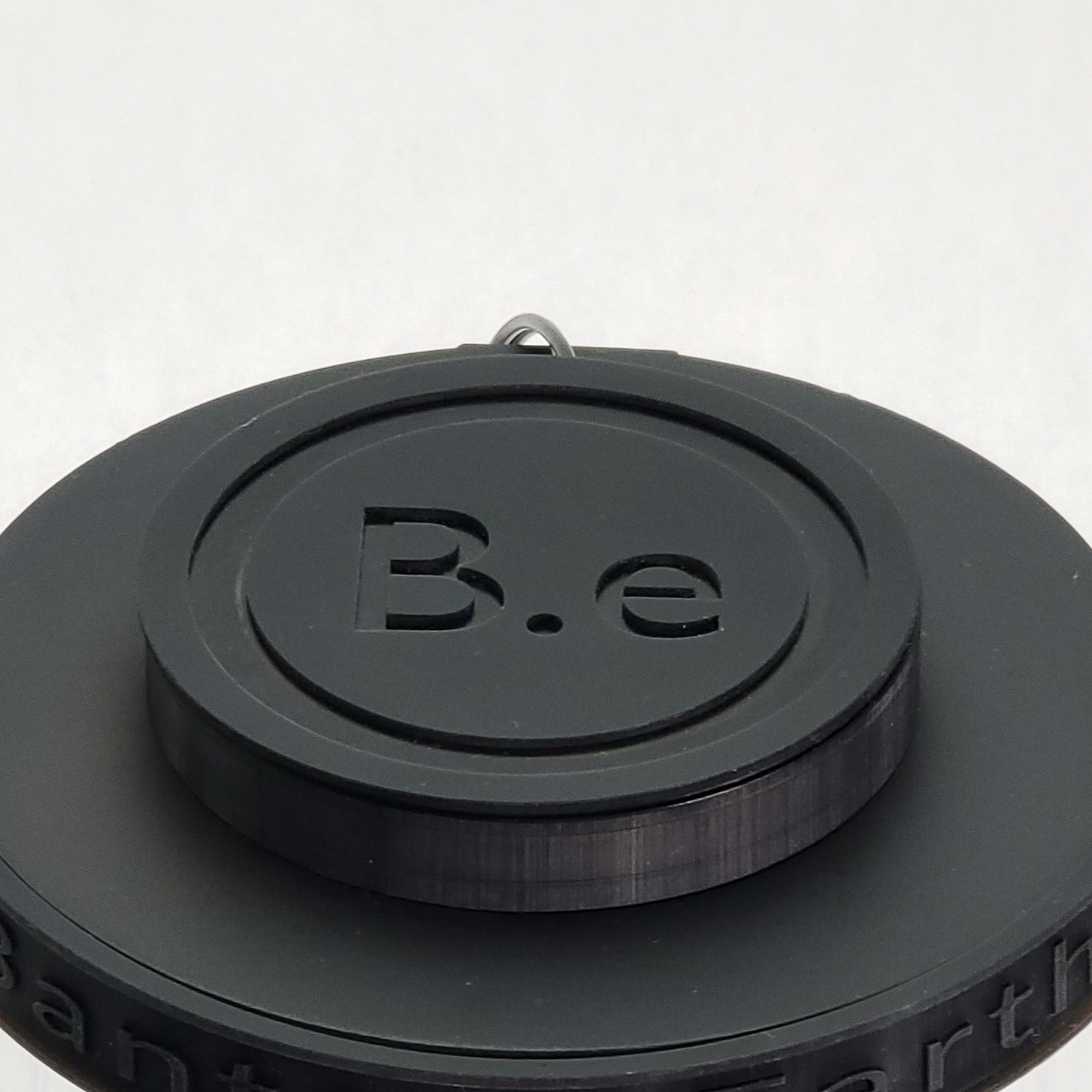

Other Essentials (To Acquire Separately)
Beyond the core hardware included in your kit, you’ll need a few other key items to complete your setup:
-
Substrate: This is the gravel or sand at the bottom of your tank.
-
Plants: Aquarium plants are extremely beneficial to these types of setups.
-
Hardscape: Rocks and wood can provide an additional surface for healthy bacteria to grow.
The Golden Rule: Understanding the Nitrogen Cycle
Welcome to the most important lesson in fishkeeping.
More than any piece of equipment, understanding the Nitrogen Cycle is the golden rule for a healthy, thriving aquarium.
This natural biological process is how your miniature world handles the toxic waste produced by its inhabitants.
Learning this concept is non-negotiable, and mastering it is the key to preventing the most common and heartbreaking mistakes for beginners.
What is the Nitrogen Cycle? A 3-Step Process
In a closed system like an aquarium, waste has nowhere to go. The nitrogen cycle is nature’s filtration system, performed by invisible colonies of beneficial bacteria that grow on surfaces in your tank (like the substrate and inside your filter pump).
-
Step 1: Ammonia (NH₃) appears. Waste from your inhabitants and any uneaten food quickly breaks down into ammonia, which is extremely toxic to all aquatic life.
-
**Step 2: Ammonia is Converted to Nitrite (NO₂) ** The first colony of beneficial bacteria grows and consumes the toxic ammonia, converting it into nitrite, which is also extremely toxic.
-
Step 3: Nitrite is Converted to Nitrate (NO₃). A second colony of beneficial bacteria then grows and consumes the toxic nitrite, converting it into a far less harmful compound called nitrate, which is removed by water changes.
“Cycling Your Tank”: The Most Important Wait
This entire process of establishing the two colonies of beneficial bacteria is called “cycling your tank.” It can take anywhere from 2 to 8 weeks to complete.
This means you must set up your Bantamarium and let it run without any fish or shrimp until the bacterial colonies are fully established and ammonia/nitrite levels are zero.
Patience during this phase is the single greatest factor in the long-term health of your miniature world.
How to Set Up Your Mini Aquarium: A Step-by-Step Guide
This is where your vision starts to become a reality. We’ll now walk through the entire process of setting up your new miniature aquarium using the Bantamarium V2 AQUA Fish Tank Kit.


Step 1: Rinse Everything. Rinse all components that will go inside your tank: your chosen substrate (rinse until the water runs clear), any rocks or driftwood, and the Mini Water Pump.
Step 2: Assemble Your Bantamarium & Install Equipment. Install all filtration pipes into the VAPO Core Glassware. Then, position your Mini Water Pump and filter media within the tall base and fill with water.
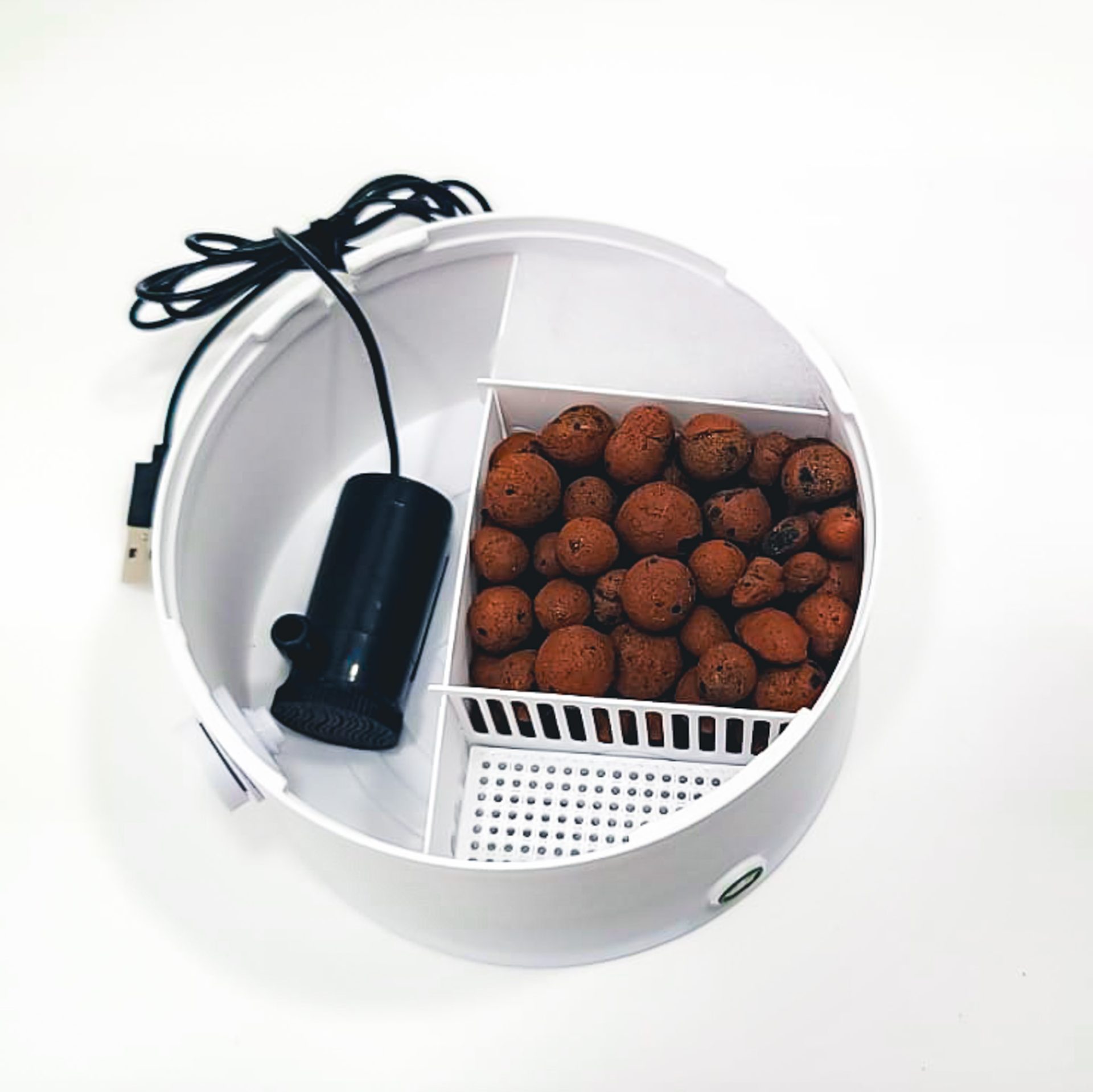

Step 3: Aquascape Your World. Arrange your substrate, driftwood, and other hardscape elements. Once you’re happy with the foundation, use tweezers to gently plant your live plants into the substrate.
Step 4: Fill the Tank. To avoid disturbing your scape, place a small plastic bag on top of the substrate and pour water slowly onto that. Fill the Bantamarium, leaving about half an inch of space at the top, then remove the bag.
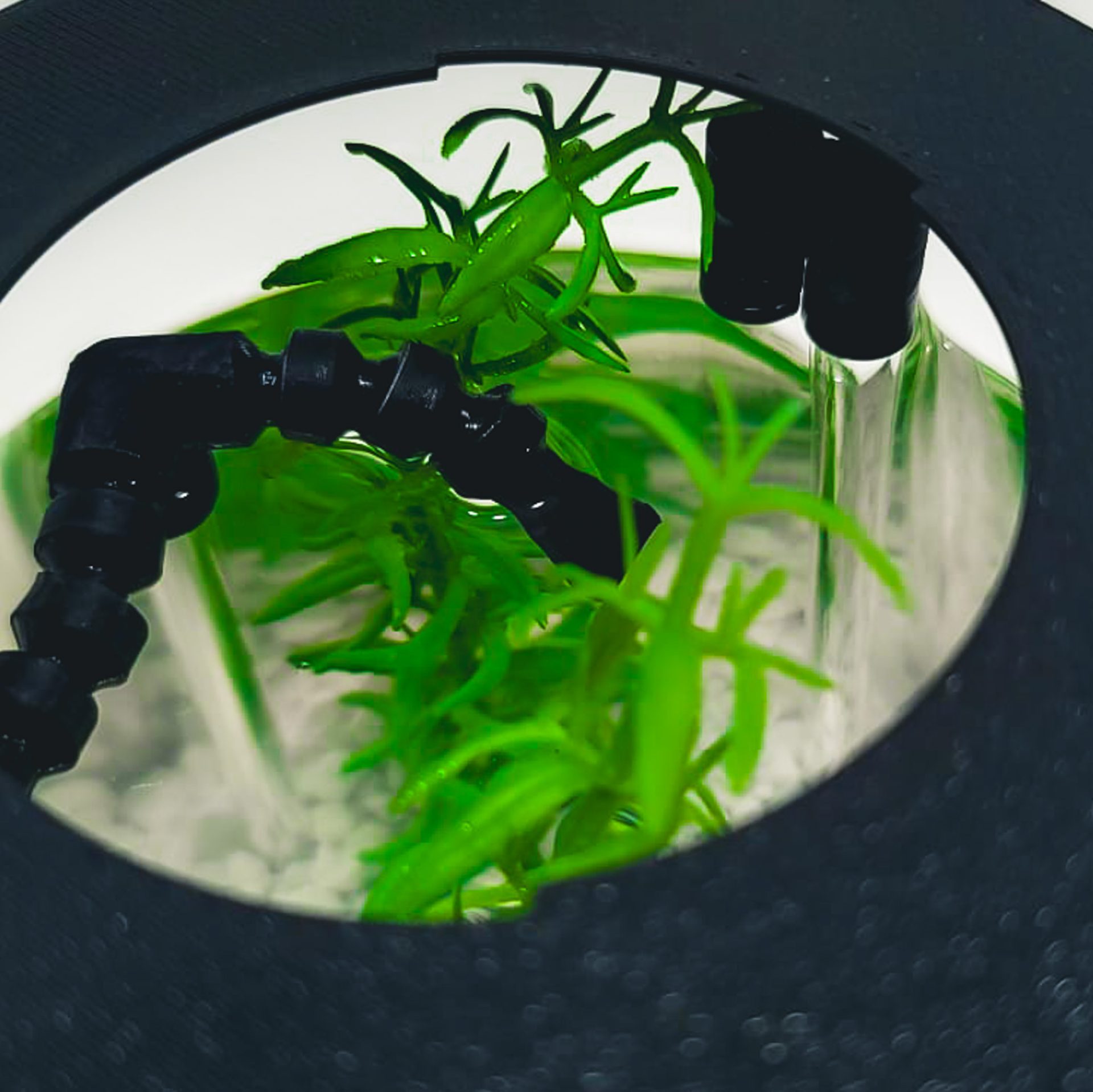

Step 5: Power On and Begin the Cycle Twist-lock your Lid and Light Top into place, plug in your pump, and turn everything on. Now, you must let the tank cycle for several weeks. Add a source of ammonia (like a pinch of fish food) to begin feeding the bacteria, and be patient.
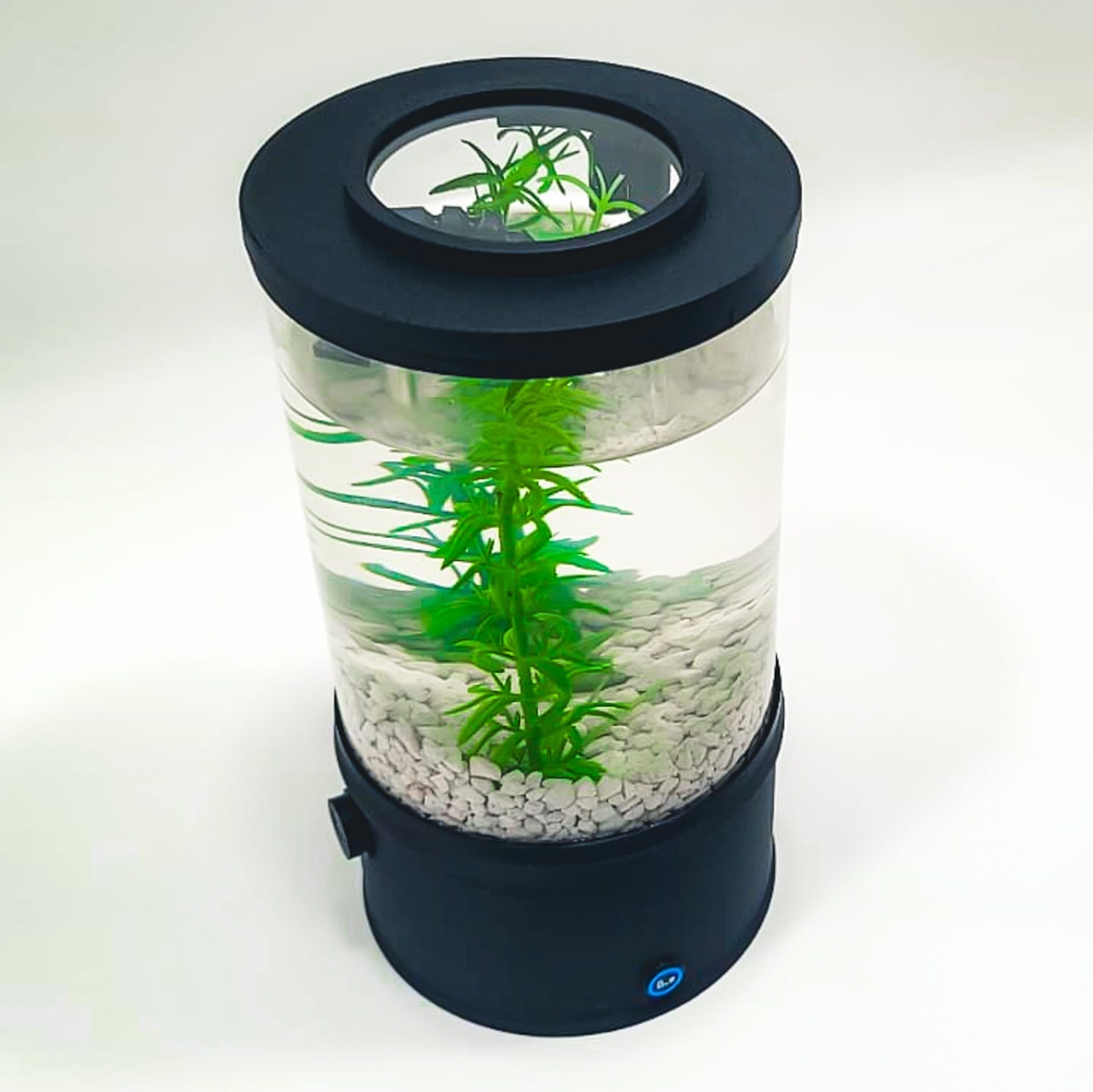

Stocking Your Miniature World: Choosing Inhabitants
With your Bantamarium fully cycled, it’s time to choose life for your miniature world. In mini aquariums of this size, invertebrates are the best and only suitable inhabitants.
Important Note: Due to their small volume, we do not recommend keeping any fish in the Bantamarium V2 MINI or NANO aquarium kits.
Stocking the V2 AQUA MINI (0.41 Gallons). The MINI is the perfect showcase for a small, dedicated shrimp colony or a single beautiful snail.
-
Dwarf Shrimp: A colony of 3-5 Neocaridina shrimp (like Red Cherry or Blue Dream Shrimp) is the ideal choice.
-
Snails: One Nerite Snail is a fantastic algae-eater for this tank
Stocking the V2 AQUA NANO (1.33 Gallons). The larger volume of the NANO gives you more flexibility for a bustling invertebrate world.
-
Dwarf Shrimp: You can comfortably house a thriving colony of 8-10 Neocaridina shrimp.
-
Snails: One or two Nerite Snails will keep the larger surfaces spotless.
Long-Term Care & Maintenance
The key to long-term success in a mini tank is consistency. Establishing a simple, repeatable routine is the best way to ensure your underwater world remains stable and thriving.
Water Changes: A regular partial water change is essential. For a Bantamarium MINI or NANO, a 25-30% water change once per week is a great starting point.
Use a small siphon to remove about a quarter of the water, then slowly add fresh, dechlorinated water that is the same temperature.
Feeding: The number one mistake in a nano aquarium is overfeeding. For shrimp, a tiny piece of a shrimp pellet 1-2 times per week is plenty.
Snails will mostly graze on algae. Only feed what your inhabitants can completely consume in under two minutes.
General Upkeep: Prune any dead leaves from plants and use a small scraper to wipe away algae from the acrylic walls.
Most importantly, spend a few minutes observing your tank every day to enjoy the beautiful, tiny world you’ve created.


Vivariums Similar To An Aquarium
The many other types of vivariums you will see out there are more than likely based on one of these core designs.
If you are building a vivarium to house a specific type of plant or animal, be sure to go with a design that closely fits their needs.
If you enjoyed this type of content, be sure to check out some of the other popular types of enclosures we’ve covered in the past:
Your Underwater Journey Begins
A miniature aquarium is a rewarding challenge… a complete, living ecosystem that you can hold in your hands.
You now have the knowledge to succeed, from the golden rule of the nitrogen cycle to the simple routines of long-term care.
Our aquarium kits were designed to be the perfect foundation for this incredible journey, providing the essential, high-quality hardware you need to start. The only thing left is to take the plunge.
Ready to start your journey? Explore our complete collection of miniature aquarium kits and supplies.
Frequently Asked Questions
The best-size fish tank for beginners is a 10–gallon aquarium. This size is great for those just starting out, as it‘s not too small, and not too large. It‘s the perfect size to easily monitor water parameters and master the necessary fish–keeping skills. Plus, you can keep a variety of fish and species in a 10–gallon aquarium.
The cost of a fish tank depends on its size, type, material, and other features. A basic 10–gallon tank typically costs around $30–$50, while a large-themed tank can range from $100 to several thousand dollars.
Fish generally prefer wide, long tanks rather than high, tall tanks as they provide more space for swimming and are often more aesthetically pleasing. Additionally, higher gal tanks tend to experience more turbulence and require additional filtration to keep the water safe for fish.
If you own a fish tank, it is important to clean it on a regular basis to ensure the health of your fish. As a general rule, you should clean your fish tank at least once every two weeks to remove any debris, uneaten food, or waste that might be left in the tank.
Yes, you can add tap water to your fish tank, but you should first treat it with a water conditioner to remove chlorine and other chemicals that can harm your fish. Water conditioners can be found at most pet supply stores and online.
It‘s best to wait 2–4 weeks before adding fish to a new tank.
This is to ensure that the water chemistry is properly balanced for the fish‘s health. Additionally, adding fish too soon can introduce pollutants into the tank, which can overwhelm the tank and damage the fish‘s health.
To change the water in your fish tank, first remove 10-25% of the water and any debris. Then, top off the tank with fresh, dechlorinated water. Make sure the temperature of the new water is close to the old water, as fish can experience shock from temperature changes. When you finish refilling the tank, add an aquarium conditioner like Prime to be sure your fish do not suffer any negative effects from the water change.
Yes, fish can drown. Fish breathe oxygen from the water around them and need to be in an environment that is adequately oxygenated. If the oxygen levels become too low, fish suffer from a lack of oxygen, which can result in drowning.
The best type of water for fish tanks is dechlorinated tap water. It‘s important to use a water conditioner to remove chlorine, chloramine, and heavy metals, as these can be harmful or fatal to your fish. Also, use a water testing kit to ensure the right pH and other levels are optimal for your fish.
Here’s a quick guide to cleaning a fish tank as a beginner:
- Turn off the heater and filter and unplug the electrical cords.
- Use a gravel vacuum to remove the old gravel and gunk from the bottom of the tank.
- Clean the gravel, decorations, and tank walls with a sponge.
- Remove 25-50% of the water from the tank and replace it with fresh water, being sure to match the temperature of the new water to that of the tank.
- Refill the filter with new media or clean it with a filter-cleaning solution.
- Replace ornaments, plants, and other decorations.
- Replace the fish with the displaced tank water.
- Turn the heater and filter back on and plug them back in.

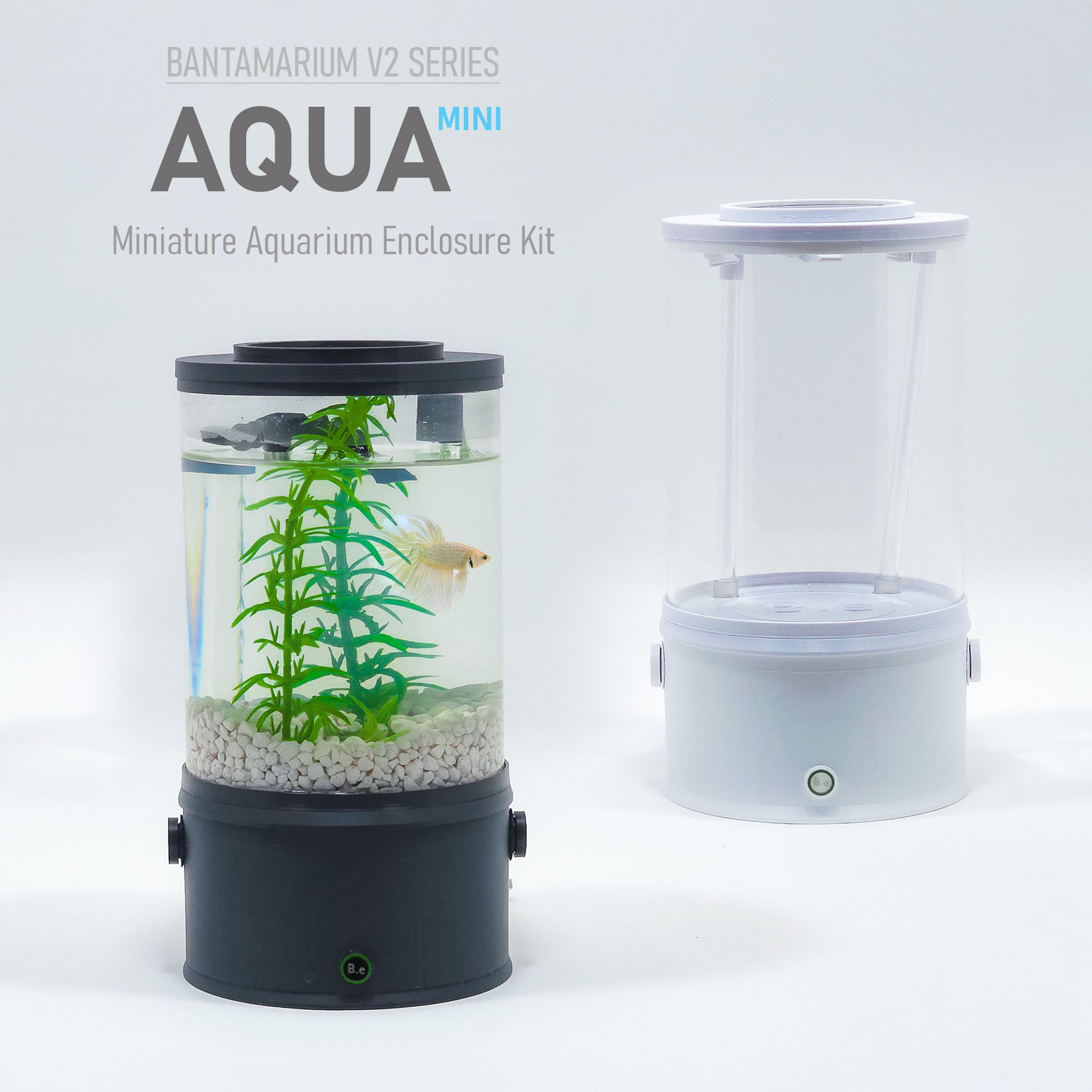
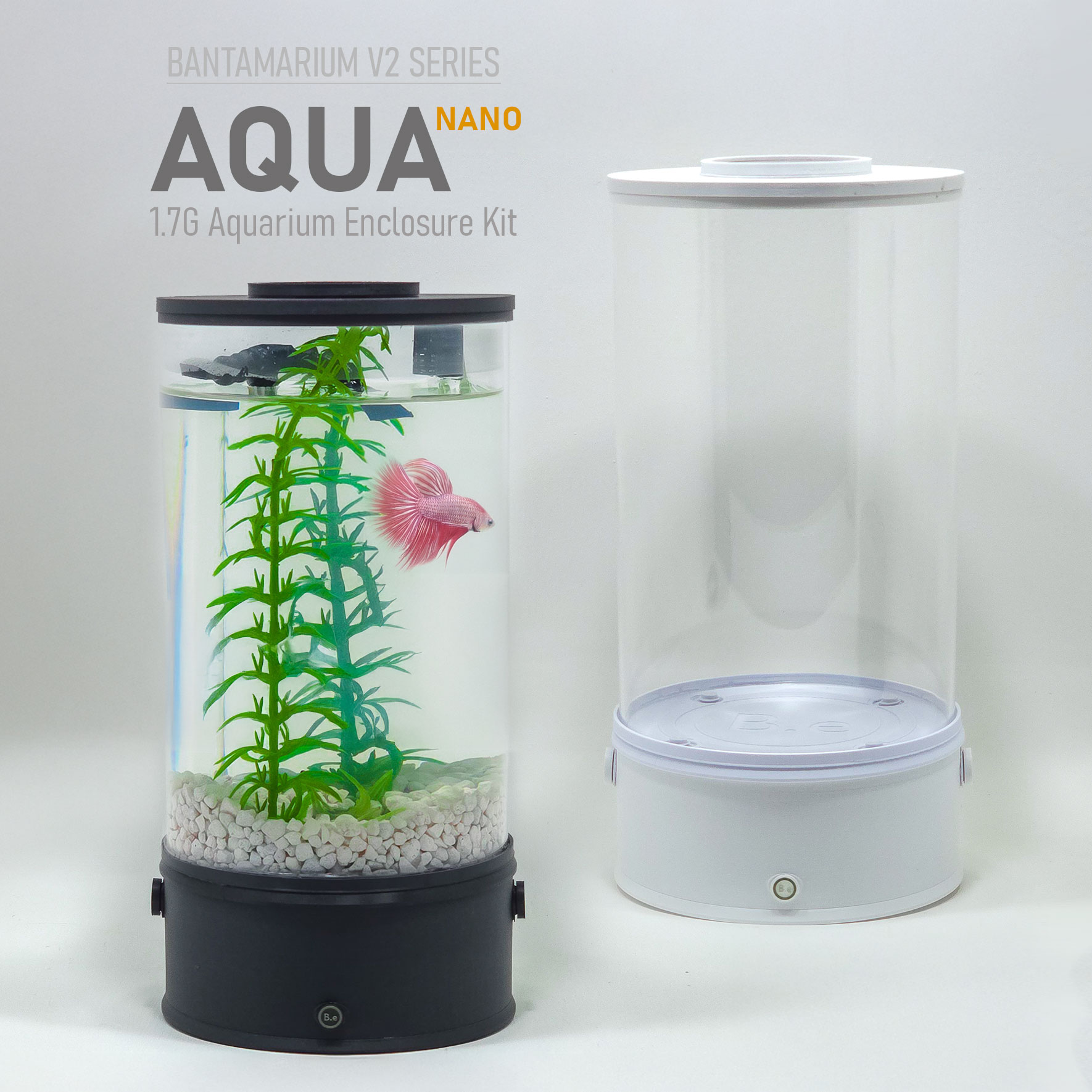



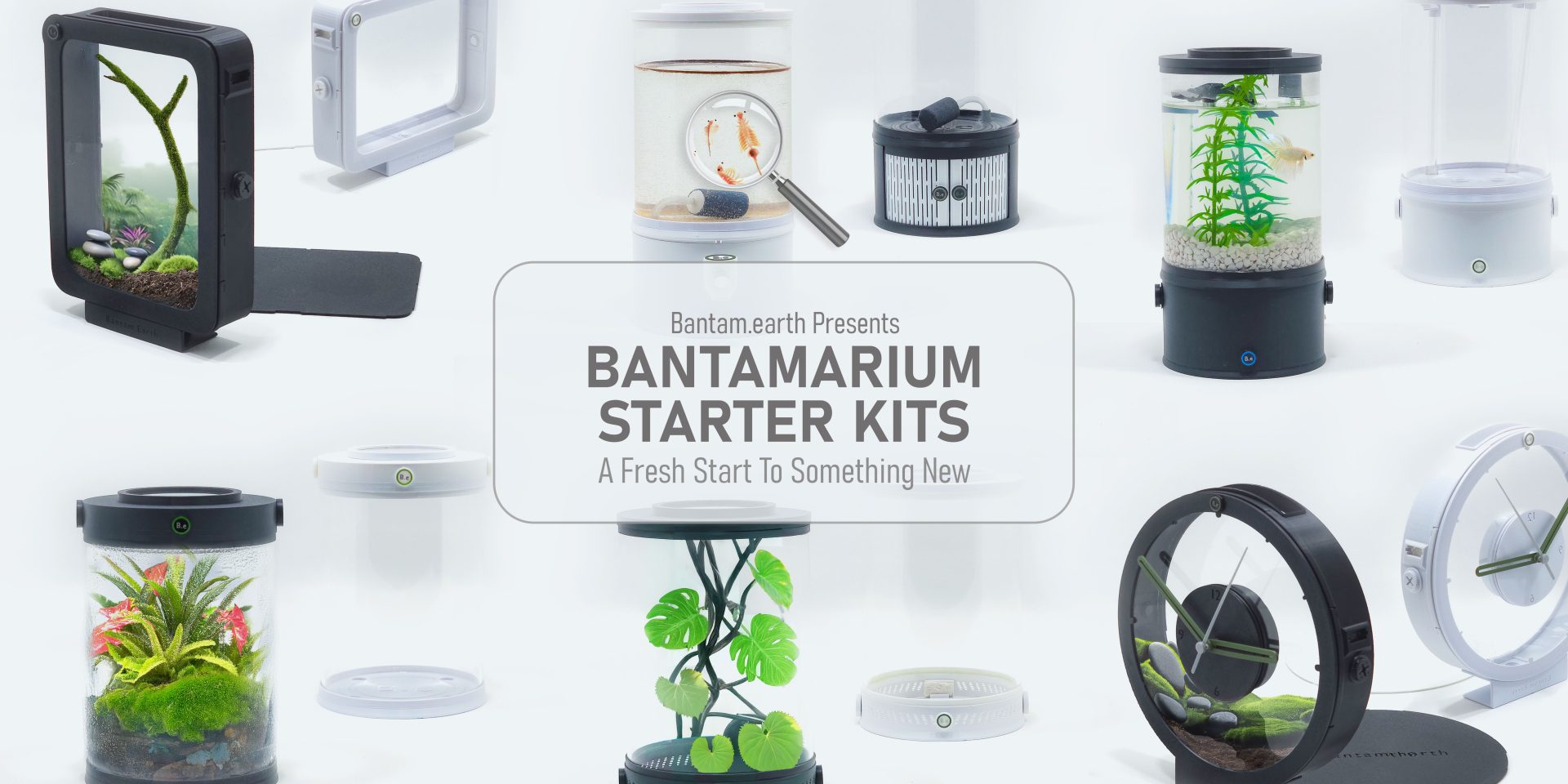


Comments are closed.